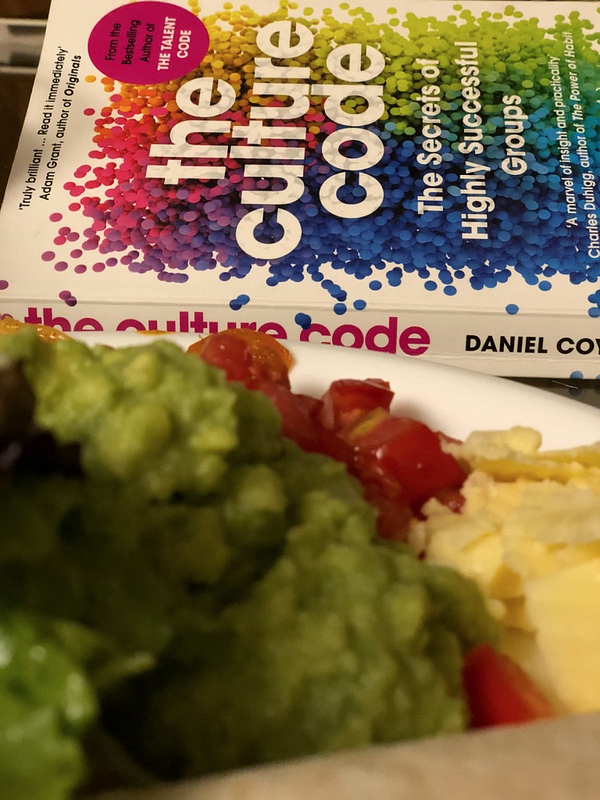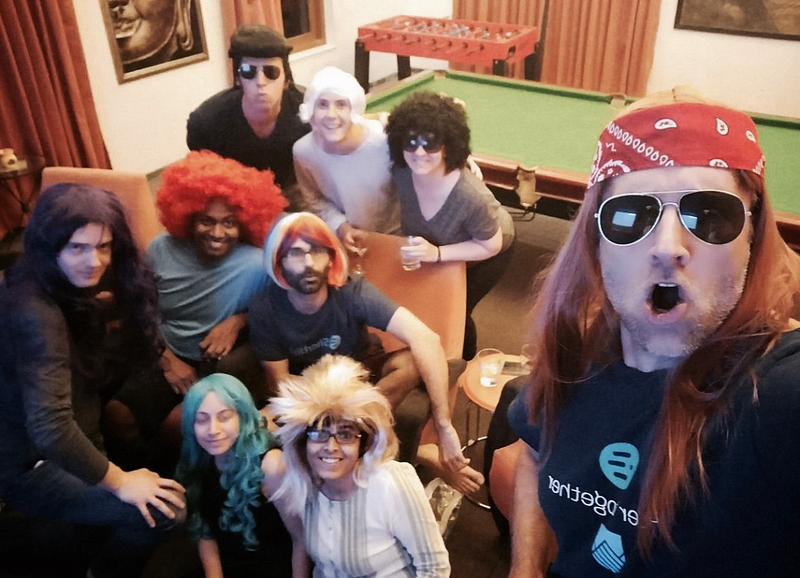Enter The Culture Code, by Daniel Coyle. I don’t know Daniel Coyle (though I wish I did), and he’s not paying us to write this (though I wish he would). I just personally found this to be a great book and I wish every manager and leader would read it.
In the book, Coyle goes through the steps leaders can follow to create environments that enable building great teams — as well as highlighting some of the common ways leaders and their teams muck things up. His steps are: One, Build Safety; two, Share Vulnerability; three, Establish Purpose. Okay, granted, standing by themselves, they don’t mean much. If you want to learn more, just read the book.
This book served as a bit of a touchstone at a recent Shortlist team offsite. Last week, our leadership team retreated to Lonavala (two hours outside Mumbai) for a few days of strategizing, aligning, and bonding. We cooked together, we exercised together, we had looong sessions on topics related to our values, new product lines, and market prioritization. Wigs may have been involved.
We kicked off the retreat with a powerful book club over dinner (guacamole made a rare Maharashtra appearance) where we discussed The Culture Code, what it means for our work and our team, and how we can help instill some of the principles and ideas into our partners as well.

This was not your typical “culture” book. We are living in a moment, at least the moment as defined by a certain kind of Silicon Valley blogger, in which company culture is held up as the answer to all woes. Uber is falling apart? It’s their bad culture. Zappos reigns supreme for their ethos of customer happiness? It’s their awesome culture. Amazon has employees crying under desks? Salesforce has risen to the top of Fortune’s list of best places to work? Culture! Culture!
A discussion of culture often starts with values, and the observable behaviors that express those values. That’s certainly where we started, when we set up to define our core values and culture at Shortlist. Read how we did that here (warning: more wigs). This has been so useful for us, and every company should do this! And surely, too few do.
But what Daniel Coyle outlines is a whole dimension of culture and “team” that sits above, below, and around a defined set of core values. A dimension of building great teams that extends these values, or perhaps better put, let’s whatever values you’ve set come to life. We might call this dimension “meta-culture”: the stew of behaviors, practices, modes of communicating, relationships and more in which culture lives and teams find their potential, or don’t. (We can’t call it Uber-culture, because that’s probably trademarked and isn’t, um, what we’re aspiring to.)
Some of the elements of this meta-culture include practices of healthy communication (profuse amounts of eye contact, short bursts of communication rather than speeches, laughter, equally shared speaking time); building social connections through belonging cues signaling we are safe, we share a future; creating opportunities to solve hard problems together and connect activities to a higher purpose; physical proximity in a workspace; shared language and stories around simple priorities; and so much more.
For me personally, this unlocked a dimension of leadership that I associate more actively with athletics than industry. It’s the practices of a close-knit sports team more than a group of managers. And it makes me wonder if everything I ever needed to know about leadership, I might have learned through high school basketball.
Being a coach or team captain in basketball was rarely about articulating a brilliant 90-day strategy or white-boarding core values. Rather, effective coaching involved facilitating a constellation of interactions or (as Daniel Coyle might say) “micro-events” that define a sense of shared purpose and safety to go out and work together and make great things happen.
I remember the way an early basketball coach (Coach Russell, who I’m sure is an avid reader of this blog) would barrage us with sprints and slide drills as a way to hammer home the priority of team and the importance of effort over outcome. One eruption occurred because of a failure of the team to slide over to support on “help side defense,” leading to painful dozens of wall touches. Another time, we were up by 20 points on a team at halftime, and feeling good about ourselves. Coach Russell came in spitting fire and fury, maybe even threw a clipboard (memory is a funny thing), because he could tell we were loafing and stopped playing hard. Even though we were up 20!
Coach Russell was most proud of us in narrow defeats in which we left everything on the floor and played our best, even though the outcome didn’t go our way. Coach Russell would sometimes position himself as our shared enemy, when we needed a shared enemy, and other times step up as a close friend, looking us in the eyes and letting us know that things would be okay. This basketball team, in the ninth grade, was one of the highest functioning, greatest examples of whole-greater-than-sum-of-parts that I’ve been a part of.
This exposed a dimension of leadership that’s been dormant within my own understanding of “Being A Leader.” It’s the dimension that’s less about never-say-die optimism, bold vision statements and well-articulated values (all important in their own right), and more about the way you make people feel, the way you listen and care, the way you create togetherness and belonging. I wonder if modern theory has over-indexed the importance of one set of skills and under-appreciated the value of other dimensions.
For Shortlist, we walked away from book club and the retreat with a rejuvenated sense of team togetherness, shared purpose, and hopefully a deeper comfort letting down our hair around each other (even if the hair’s synthetic and purchased on Amazon). We went another step deeper defining the observable behaviors related to our core values, but we also spent time brainstorming how to barrage our team with “belonging cues,” how to more actively create “vulnerability loops,” how to capitalize on “threshold moments” like when new teammates join our team. And we left with a desire to share some of these lessons on leadership and building great teams with our colleagues and partners, hoping these ideas can helpfully supplement everything else the world thinks it knows about company culture.






































